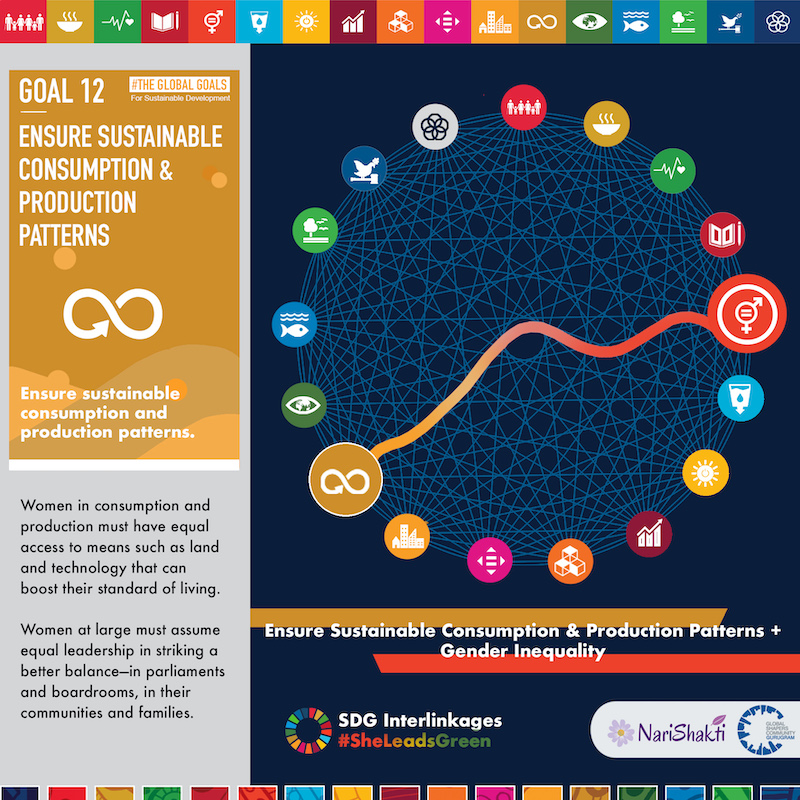
Gender parity for responsible consumption and production (SDG 12)

Why do we need to look at responsible consumption and production from gender lens?
- Women can be key actors to encourage more sustainable patterns in consumption.
- Women must have equal access to means such as land and technology that can boost their standard of living and increase their participation in consumption and production.
- Women at large must assume equal leadership in striking a better balance—in parliaments and boardrooms, in their communities and families. There are numerous examples of successful initiatives engaging women to promote sustainable consumption.
- In a study of households in Harare, the inclusion of women in solid waste management was found to ensure proper sanitation behaviour across the community.
How is responsible consumption/ production and gender-linked?
There are 11 targets and 13 indicators to achieve SDG 12. None of the indicators are gender-specific.
- Consumption patterns differ by gender, with women spending more on perishables and men more on durables. This is a result of the traditional work-home division of responsibilities, which to some extent persists in dual-earner households. Estimates from Canadian companies show that women make over 80% of consumer purchasing decisions.
- Women are overrepresented in assembly-line type jobs in developing countries, which tend to be low-pay, have bad working conditions (long and irregular working hours) and weak employment and social protection.
- Sectors with major representation of women include textiles and recent reports on the conditions in textile factories and the garment sector particularly highlight the vulnerability of women.
- In Vietnam, 80% of the 700,000 garment factory workers are women. They work for longer hours than men, are less likely to receive training and benefits, and earn only 85% of men’s wages.
- Weak labour conditions not only negatively affect women’s well-being but are also linked to sectors that are responsible for unsustainable production practices. Women are more likely to experience the negative side-effects of unsustainable production, such as pollution and the destruction of rural communities and public commons such as forests.
- Women generally have less of a say in production, as they have fewer assets and less access to leadership positions, especially in manufacturing activities and the natural resource sector.
- In 2013, only 10% of employees in the large-scale extractive industry were women. Studies suggest that countries with high dependence on mining, oil and gas extraction, have fewer women in leadership positions than men (World Bank 2015).
What outcomes can we achieve in SDG 12 if we reach gender parity?
- Gender equality and creation of sustainable economies is mutually reinforcing.
- Women as decision-makers would help in promotion of sustainable global production patterns.
- The integration of women in local value chains would enable regional and suburban development and reduce urban resettlement and the pressures of urban living.
References
- Davies, N. and N. Kudzai (2016), “’The Usefulness of Including Women in Household Solid Waste Management. A Case Study of Dzivaresekwa High Density Suburb; Harare”, IOSR Journal of Humanities and Social Science, Vol. 21, pp. 92-108
- https://www.oecd.org/gov/gender-mainstreaming/policy-coherence-for-sustainable-development-and-gender-equality.pdf
- OECD (2021). Gender and the Environment Building Evidence and Policies to Achieve the SDGs: Building Evidence and Policies to Achieve the SDGs


